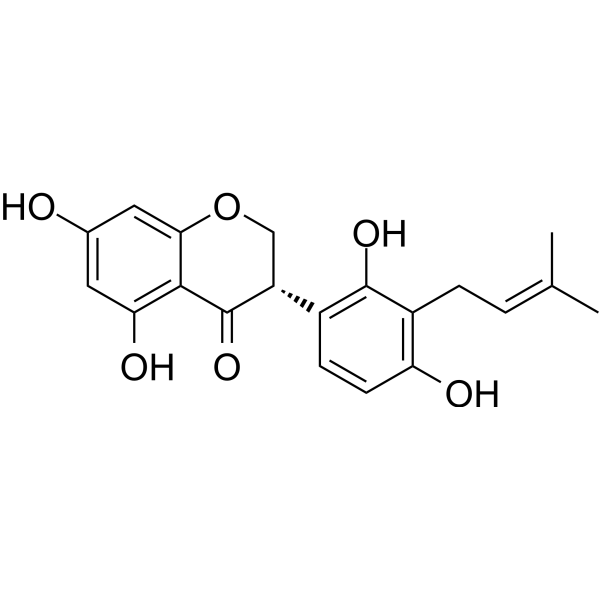
Dihydrolicoisoflavone
CAS No. 164163-92-2
Dihydrolicoisoflavone( —— )
Catalog No. M31758 CAS No. 164163-92-2
Dihydrolicoisoflavone A possesses weaker anti-H. pylori activity, it may be useful chemopreventive agents for peptic ulcer or gastric cancer in H. pylori-infected individuals.
Purity : >98% (HPLC)
 COA
COA
 Datasheet
Datasheet
 HNMR
HNMR
 HPLC
HPLC
 MSDS
MSDS
 Handing Instructions
Handing Instructions
| Size | Price / USD | Stock | Quantity |
| 5MG | 657 | In Stock |


|
| 50MG | Get Quote | In Stock |


|
| 100MG | Get Quote | In Stock |


|
Biological Information
-
Product NameDihydrolicoisoflavone
-
NoteResearch use only, not for human use.
-
Brief DescriptionDihydrolicoisoflavone A possesses weaker anti-H. pylori activity, it may be useful chemopreventive agents for peptic ulcer or gastric cancer in H. pylori-infected individuals.
-
DescriptionDihydrolicoisoflavone A possesses weaker anti-H. pylori activity, it may be useful chemopreventive agents for peptic ulcer or gastric cancer in H. pylori-infected individuals.
-
In Vitro——
-
In Vivo——
-
Synonyms——
-
PathwayOthers
-
TargetOther Targets
-
Recptor——
-
Research Area——
-
Indication——
Chemical Information
-
CAS Number164163-92-2
-
Formula Weight356.4
-
Molecular FormulaC20H20O6
-
Purity>98% (HPLC)
-
Solubility——
-
SMILES——
-
Chemical Name——
Shipping & Storage Information
-
Storage(-20℃)
-
ShippingWith Ice Pack
-
Stability≥ 2 years
Reference
molnova catalog



related products
-
Lauroseptol
Cetrimonium Bromide is a known component of the broad-spectrum antiseptic cetrimide, which is a mixture of different quaternary ammonium salts.
-
Etilevodopa hydrochl...
Etilevodopa HCl is a prodrug of levodopa. It also has greater gastric solubility and significant brain penetration.
-
[Cys18]-Atrial Natri...
ANP [Des18-22] 4-23 amide rat is a polypeptide fragment of rat atrial natriuretic peptide (ANP) that specifically binds NPR-C.



 Cart
Cart
 sales@molnova.com
sales@molnova.com


